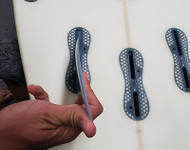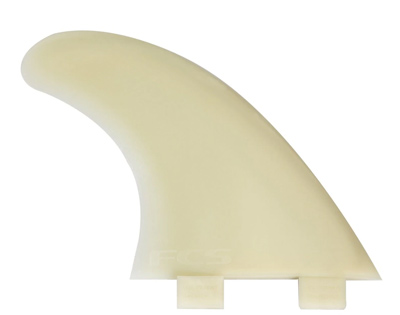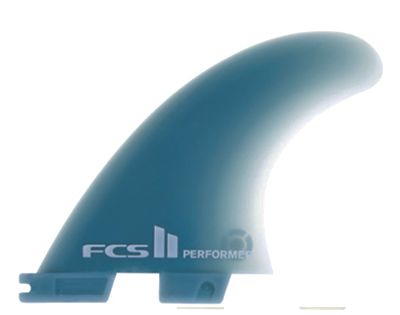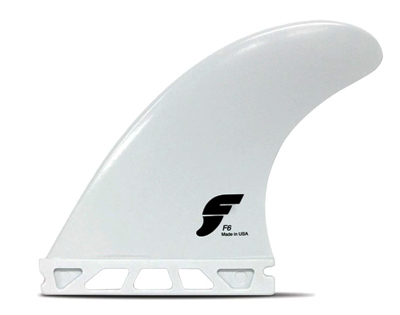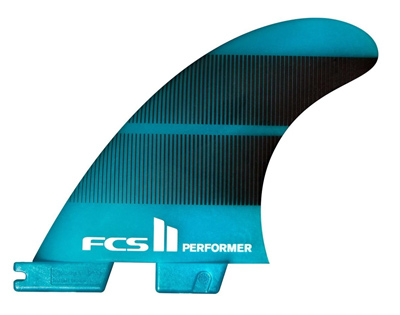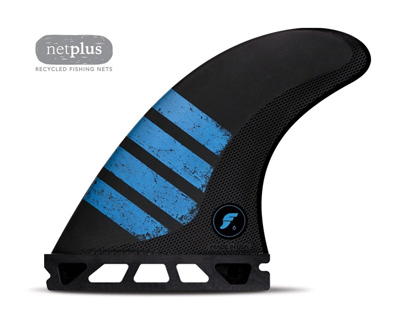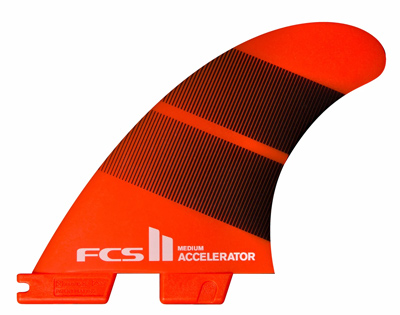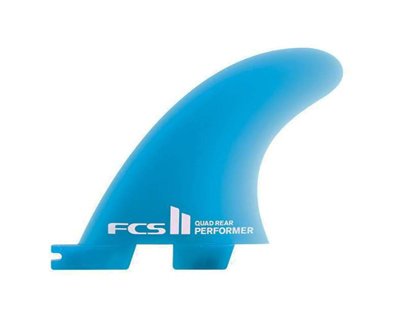Whenever I mention fin material or templates to people, they usually say the same thing, and that is, “Oh I don't think I'd even be able to tell the difference anyway.” Well, if you're a beginner, and you're just starting to go down the line, I would agree with you, but if you're surfing regularly, going down the line every time, and starting to do turns, then I guarantee you will tell a difference between different materials and templates.
So for now….
Let's talk construction material for surfboard fins. Typically when you receive a surfboard, if there are any fins that come with it, they will usually be a composite plastic-like material. If the board doesn’t come with any fins, this type of fin will be your cheapest alternative to more expensive fiberglass fins. Inexpensive is a plus, but there are definitely some negative things to this type of surfboard fin. Namely, they flex too much. The material is plastic-like, which means it's softer than fiberglass and carbon fiber, so it's going to flex more.
Let’s look at the bases and the material of the three main fin systems: FCS, FCS2, and Futures. With the old FCS two-tab fin system, I definitely think the plastic material has the worse effect on the flex situation. This is because essentially, there are only two 3/4 of an inch pieces of plastic that are secured into the fin box. So the whole fin is flexing from the bottom; those two small tabs are the only thing connecting the base of the fin to the fin box. Also, something to note: the old FCS two-tab fins now come in a color called “natural.” This was due to the fact that the pigment that was mixed to turn the fin white or black was slightly diluting the material, causing the fin to be a little weaker and therefore flexing even more. So if you are riding the old two-tab FCS fins and they are black or white, you might want to look into getting the latest “natural” material, as it typically should be stronger than anything white or black from FCS.
The FCS2 is still a two-tab fin system, but the tabs are a lot longer than the old system, so there is more material that is secured in the fin box. That is definitely an improvement. But I will say, out of all the materials of the three-fin systems we are discussing, the Blue GLASS-FLEX FCS2 material flexes the most. So that part is not ideal.
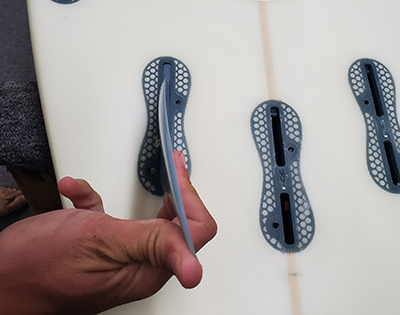
The Futures fin system has the entire length of the base secured in the fin box. That is great, and in my opinion, it is your best-case scenario for the cheaper fin set up. Out of all the pushing and torqueing I do to test the fins, the THERMOTECH white material from Futures is the best cheaper fin material.
So why doesn’t this composite plastic material work well as a fin? This weaker plastic-like material flexes all throughout from the pressure of the water pushing on the surface area of the fin. Because the material is weaker, it does not push back with as much force as fiberglass or carbon fiber; therefore, relatively speaking, it has more of a boggy or less resilient feel to it. In other words, there is poor response. If you are an entry-level surfer and you are surfing waves that are smaller or mushy, this can be totally fine, and you won't necessarily be surfing at a deficit due to your fin material. But if the waves are bigger, your surfing progresses, or you're a good surfer riding the cheap composite material, you will want to upgrade to stiffer material. It will improve your performance!
But what if you don’t want to drop $100 right now on a set of fins? Well, there is an option.
In the last few years, both Futures and FCS have noticed a big gap in material and price between the composite material and the fiberglass end or fiberglass carbon material. The usual scenario has been the cheap composite ones starting off at $25 to $35 and then jumping straight up to $100 with nothing in between. So FCS came up with NEO GLASS material, and Futures came up with the ALPHA material. Both of these are a much higher grade material with better flex response, and they come in at a mid-range price.
The FCS NEO GLASS material fins (starting at $78) are “precision molded using long strand fiberglass and a marine grade polymer. Very affordable yet considered a premium construction due to its high fiberglass content and active flex pattern, these fins will accommodate a wide range of surfers and surfing conditions.”
When discussing the ALPHA material (starting at $65), from what I remember of the conversation with the Futures guys, they had gone to 3M to have a carbon fiber-type pellet made that they could melt down and inject into their molds here in California. It has a really cool blend of strength-to-weight ratio. They are able to combine recycled fishing nets in to the original ALPHA material. This is called NETPLUS.
“THE FIRST SURF FINS MADE FROM RECYCLED FISHING NETS
Made in California, the Alpha product line is now made by incorporating Bureo’s NetPlus recycled fishing nets with Futures’ compound 6 Carbon and Air infused technology. NetPlus material is sourced from Bureo’s fishing net recycling program in Chile, which provides collection points to keep plastic fishing nets out of our oceans. Preventing harmful materials from entering the ocean, their program protects wildlife and supports local fishing communities through financial incentives.
Our Alpha product line is molded carbon fiber made in Huntington Beach, California that delivers every bit of performance you’d expect from an upgrade fin at a Balanced Ride Number. Incredibly lightweight & resilient, Alpha is the first of its kind; created using one-of-a-kind materials and new technologies developed by Futures.”
These two materials are both really good. I have found from personally testing the material, as well as our staff riding these materials regularly, that they both offer a good performing fin. The ALPHA fins feel awesome, and they are lighter than the cheaper THERMOTECH and have a fair amount of rigidity, which makes them perfect for everyday surfing here in California. I also really like the NEO GLASS material. For my everyday shortboards that have FCS2 fin boxes in, I will ride the Accelerator Medium NEO GLASS, and I really like how they feel. I also keep a set of NEO GLASS Quad Performer rears on hand at all times for when I want to switch up and make my board a quad from a thruster.
These are awesome mid-priced alternatives that have come to the marketplace in the last few years that have given a lot of people an alternative to get away from the entry-level plastic format and to get some more performance out of their boards without dropping big dollars on the fiberglass and carbon fins. If you are tiptoeing towards intermediate level on up and you are still riding the plastic fins, you may want to check out these formats and upgrade your equipment with the smallest hit to your bank account. If you are a good surfer, you might want to give the ALPHA or NEO GLASS fins a try. A lot of us here at the shop have tried them and made them our “everyday” fins.
Right now, the ALPHA material from Futures Fins, comes in a number of templates including the F2 tri, F4 tri, F6 tri, F8 tri, F4 five fin, F6 five fin, F8 five fin, John John Florence Medium Tri, Controller Quads, K2 Twin Keels, T1 Twin plus stabilizer, 4” quad rears, and 3.75” quad rears. And, upon writing this we are just informed that in October they are releasing AM Med and AM Large in the ALPHA as well.
The NEO GLASS comes in the Performer in most sizes, Accelerator in some sizes, Reactor in some sizes, Carver in some sizes, Mark Richard Twin plus stabilizer, Performer quad rears and Carver quad rears.
OK, there you have it!
If you have any questions, hit me up at https://usedsurf.com/ask-the-fin-guru/.
In the next article, we will discuss the fiberglass, honeycomb, and carbon fins!

